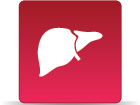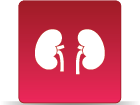Trichloroethylene
CASRN 79-01-6 | DTXSID0021383
- IRIS Summary (PDF) (63 pp, 520 K)
- Supporting Documents for Trichloroethylene
Noncancer Assessment
Reference Dose for Oral Exposure (RfD) (PDF) (63 pp, 520 K)
Last Updated: 09/28/2011
| System | RfD (mg/kg-day) | Basis | PoD | Composite UF | Confidence |
|---|---|---|---|---|---|
| Developmental, Immune | 5 x 10-4 | (See Note) | High |
Note: The RfD was derived as a midpoint among three similar candidate RfDs—0.00048 mg/kg-day for decreased thymus weight in mice (Keil et al., 2009), 0.00037 mg/kg-day for developmental immunotoxicity (decreased PFC and increased delayed-type hypersensitivity) in mice (Peden-Adams et al., 2006), and 0.00051 mg/kg-day for fetal heart malformations in rats (Johnson et al., 2003). See Section I.A.1 of the IRIS Summary for Trichloroethylene for more information.
Reference Concentration for Inhalation Exposure (RfC) (PDF) (63 pp, 520 K)
Last Updated: 09/28/2011
| System | RfC (mg/m3) | Basis | PoD | Composite UF | Confidence |
|---|---|---|---|---|---|
| Developmental, Immune | 2 x 10-3 | (See Note) | High |
Note: The RfC was derived as the midpoint of two similar candidate RfCs—0.0019 mg/m3 for decreased thymus weight in mice (Keil et al., 2009) and 0.0021 mg/m3 for fetal heart malformations in rats (Johnson et al., 2003). See Section I.B.1 of the IRIS Summary for Trichloroethylene for more information.
Cancer Assessment
Weight of Evidence for Cancer (PDF) (63 pp, 520 K)
Last Updated: 09/28/2011
| WOE Characterization | Framework for WOE Characterization |
|---|---|
| Carcinogenic to humans | Guidelines for Carcinogen Risk Assessment (U.S. EPA, 2005) |
- Following U.S. EPA (2005b) Guidelines for Carcinogen Risk Assessment, TCE is characterized as "carcinogenic to humans" by all routes of exposure.
- This may be a synopsis of the full weight-of-evidence narrative.
Quantitative Estimate of Carcinogenic Risk from Oral Exposure (PDF) (63 pp, 520 K)
Oral Slope Factor:
4.6 x 10 -2 per mg/kg-day
Extrapolation Method:
PBPK model-based route-to-route extrapolation of the inhalation unit risk estimate for kidney cancer with a factor of 5 applied to include non-Hodgkin's lymphoma (NHL) and liver cancer risks, combined risk
Tumor site(s): Hematologic, Hepatic, Urinary
Tumor type(s): Renal cell carcinoma, non-Hodgkin's lymphoma, and liver tumors (Charbotel et al., 2006 EPA, 2011 Raaschou-Nielsen et al., 2003)
Note: ADAF -- EPA has concluded that trichloroethylene is carcinogenic by a mutagenic mode of action. Application of age-dependent adjustment factors (ADAFs) to the oral slope factor is recommended in combination with appropriate exposure data when assessing risk associated with early-life exposure.
Quantitative Estimate of Carcinogenic Risk from Inhalation Exposure (PDF) (63 pp, 520 K)
Inhalation Unit Risk:
4.1 x 10 -6 per µg/m3
Extrapolation Method:
Low-dose linear extrapolation from the point of departure (LEC01) with a factor of 4 applied to include non-Hodgkin's lymphoma (NHL) and liver cancer risks, combined risk
Tumor site(s): Hematologic, Hepatic, Urinary
Tumor type(s): Renal cell carcinoma, non-Hodgkin's lymphoma, and liver tumors (Charbotel et al. 2006 EPA, 2011 Raaschou-Nielsen et al., 2003)
Note: ADAF -- EPA has concluded that trichloroethylene is carcinogenic by a mutagenic mode of action. Application of age-dependent adjustment factors (ADAFs) to the inhalation unit risk is recommended in combination with appropriate exposure data when assessing risk associated with early-life exposure.
- Human Health Benchmarks for Pesticides (HHBP). This database provides human health benchmarks for pesticides that may be present in drinking water.
- Office of Pesticide Programs Pesticide Chemical Search. This database provides links to health effects information and registration status for pesticides.
- Chemistry Dashboard. This database provides information on chemical structures, experimental and predicted physicochemical, and toxicity data.
You will need Adobe Reader to view some of the files on this page. See EPA’s PDF page to learn more.






